Asus ROG Zephyrus G14 (2024) hands-on review: OLED has arrived
Gaming laptops don't get much slicker or slimmer
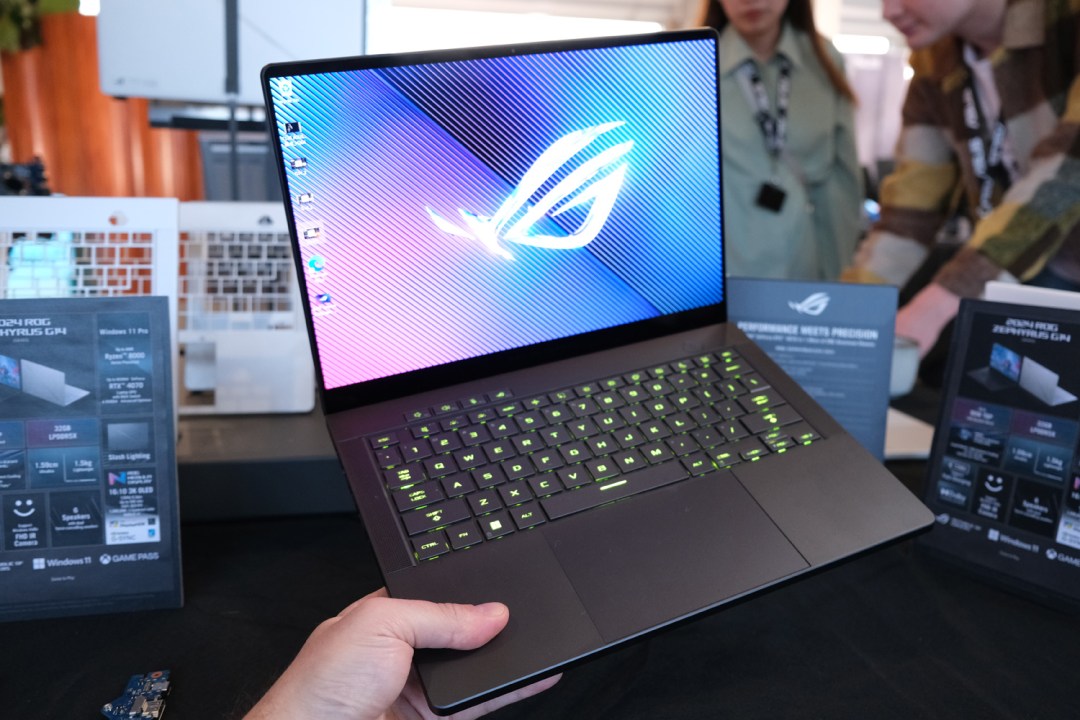
Initial Stuff Verdict
Incredibly thin, impressively powerful, impossible to beat? The Asus ROG Zephyrus G14 (2024) is shaping up to be a fantastic gaming ultraportable
Pros
- OLED display is a beauty
- Serious amount of power in a small chassis
- Great connectivity
Cons
- Price
- GPU power limited compared to thicker rivals
Introduction
The Asus ROG Zephyrus G14 has long been one of my go-to gaming laptop recommendations. Through several generations, few rivals could match its blend of potent performance and portable dimensions. But for 2024, it could be the laptop I point everyone towards – not just gamers.
This 14in ultraportable keeps the dedicated GPU for smooth frame rates in the latest games, but now makes the switch from polycarbonate plastic to a metal unibody, with more grown-up styling that won’t look out of place in the office. It’s even slimmer than ever, and finally brings OLED display tech to the ROG lineup for the first time.
After going hands-on with it ahead of the official reveal at this year’s CES, I think this could be a genuine Windows-powered alternative to the MacBook Pro 14in. Oh, and there’s an even more powerful 16in variant if size matters most to you.
How we test laptops
Every laptop reviewed on Stuff is used as our main device throughout the testing process. We use industry standard benchmarks and tests, as well as our own years of experience, to judge general performance, battery life, display and sound quality. Manufacturers have no visibility on reviews before they appear online, and we never accept payment to feature products.
Find out more about how we test and rate products.
Design & build: honey I shrunk the lid
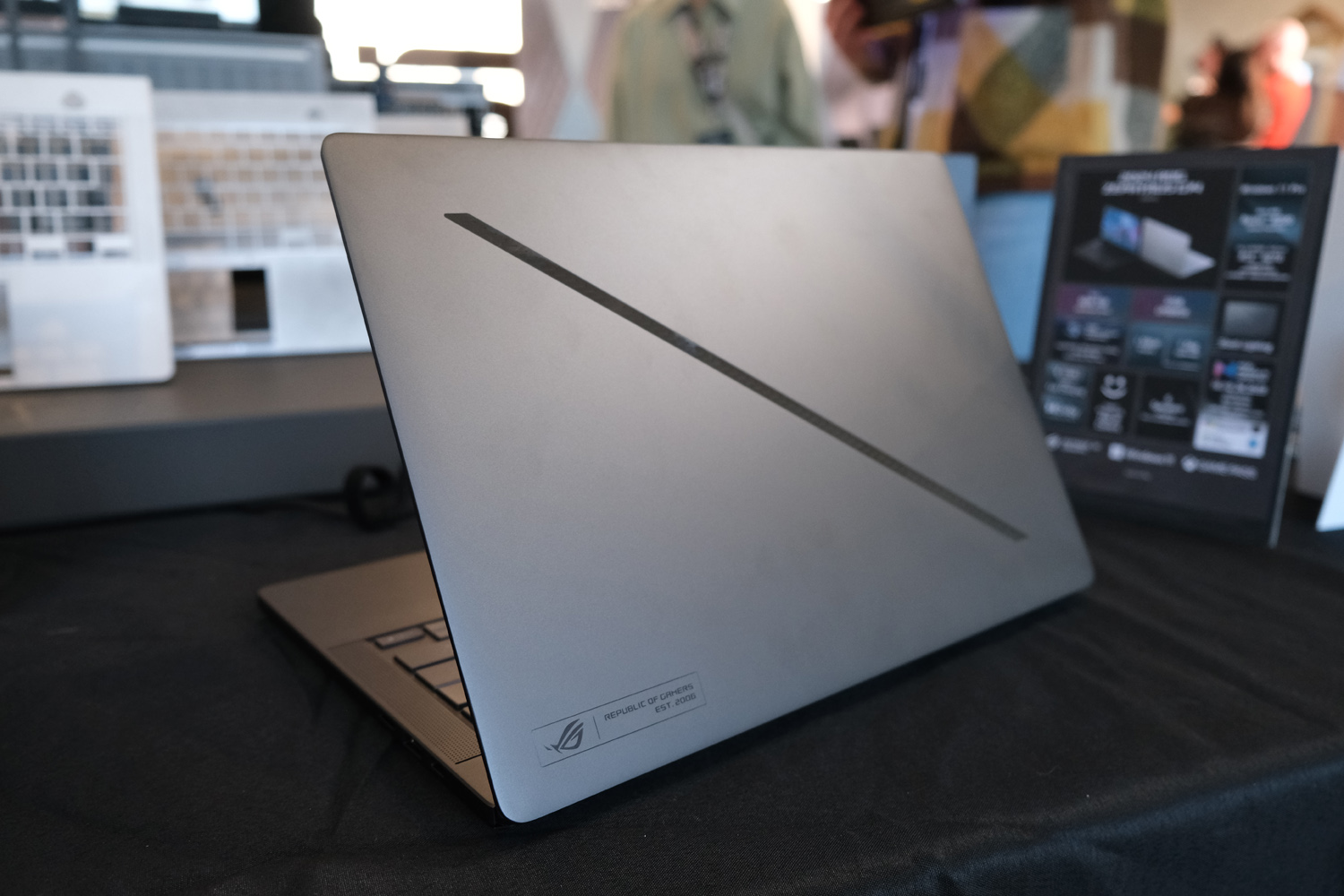
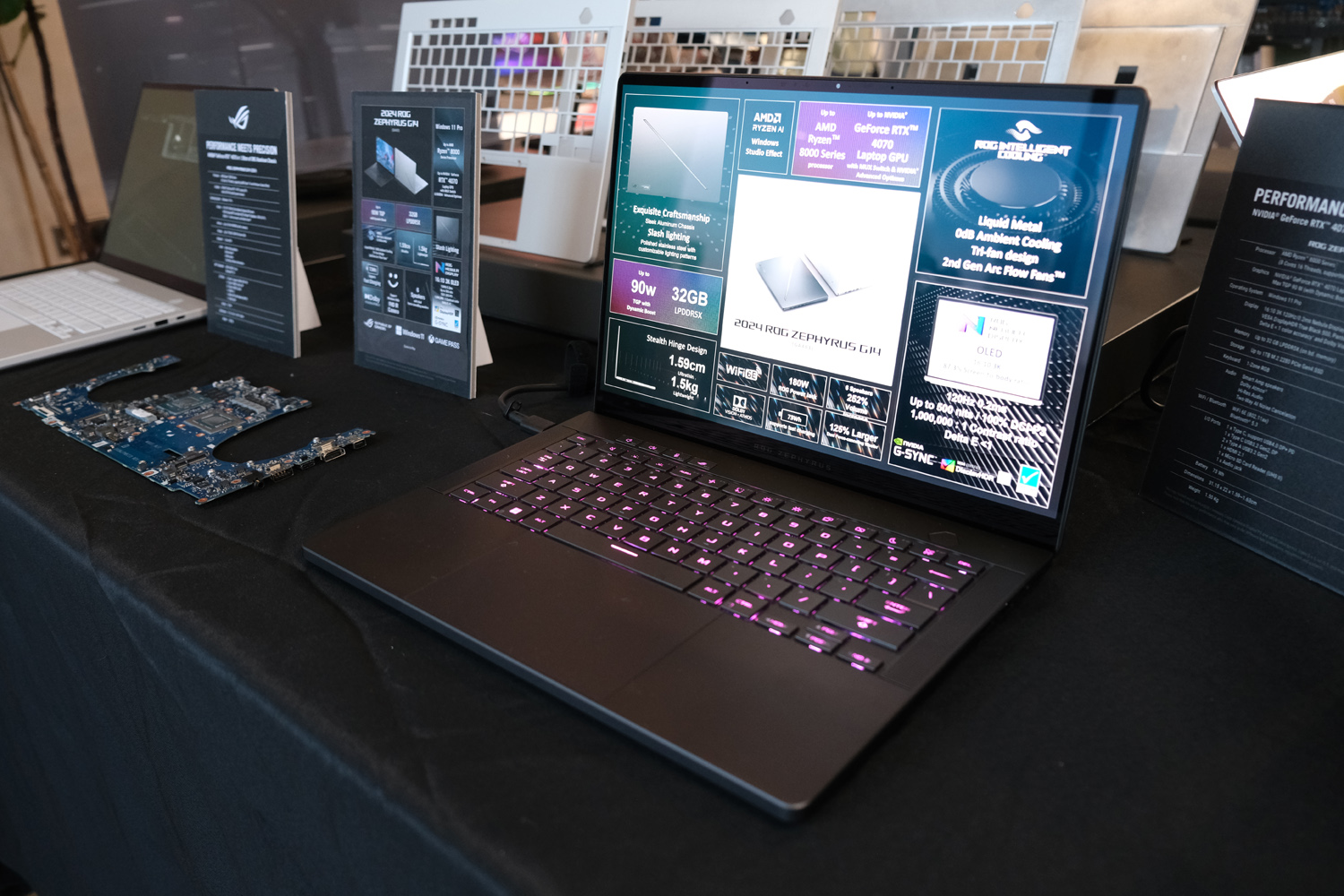
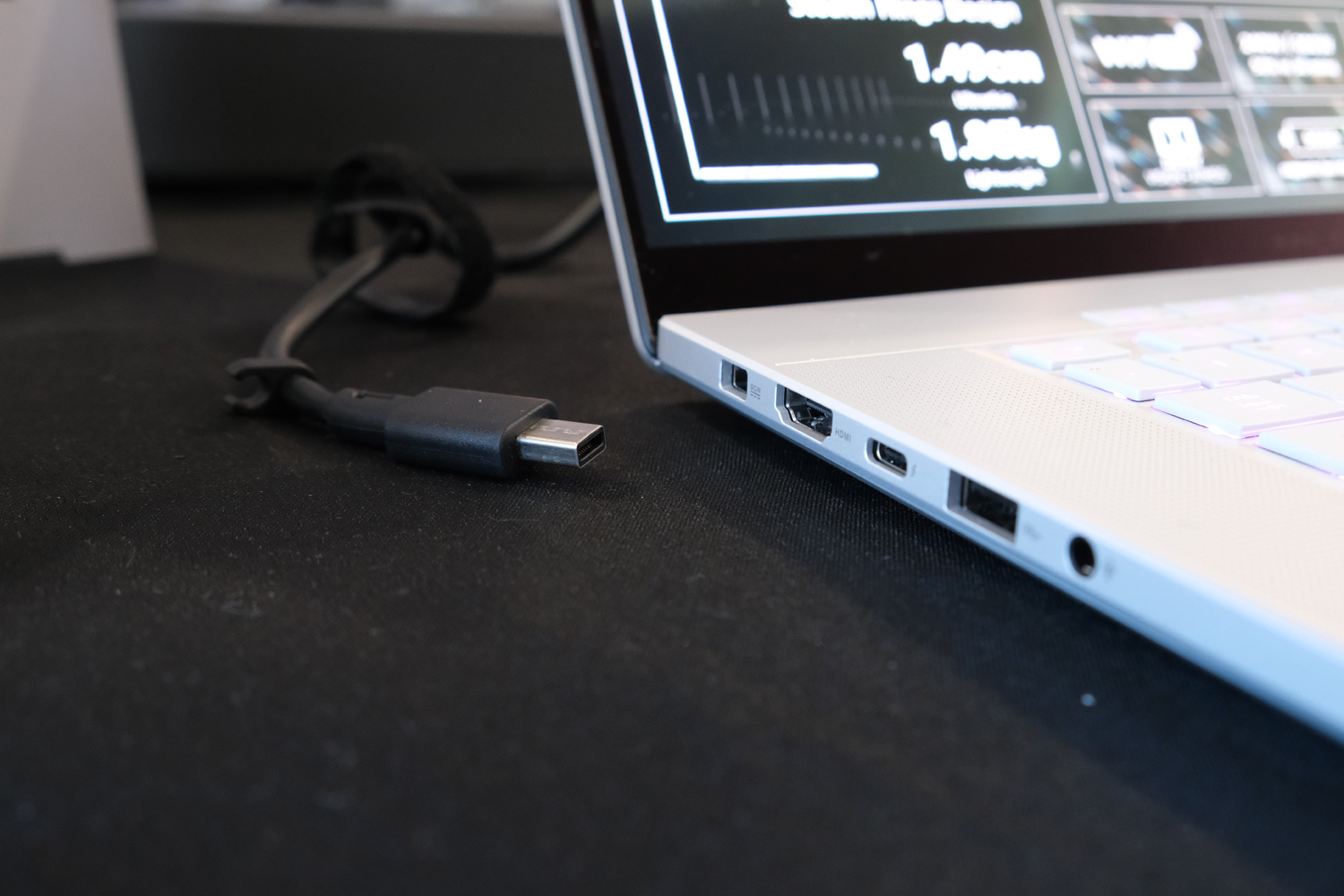
The Asus ROG Zephyrus G14 (2024) is a seriously svelte laptop. At just 14.9mm, almost half that of last year’s G14, and even thinner than a 14in MacBook Pro. That’s partly down to the move to a reassuringly tough CNC aluminium chassis, which also helps keep weight to a minimum and makes the whole thing feel gloriously high-end.
Asus will sell you one in Platinum White, but it’s the Eclipse Grey I think is the winner; it looks professional, even with the customisable LED ‘slash’ logo on the lid, and will (hopefully) be less susceptible to Cheeto dust fingerprints. Those illuminations are a lot more subtle than the AniMe matrix display seen on last year’s model, too.
There’s a healthy selection of ports for such a skinny machine, with twin USB-Cs, two USB-As, an HDMI 2.1 display out and a 3.5mm headphone port. The only concession is the microSD card reader; the larger Zephyrus G16 gets a full-size SD card reader instead.
You don’t have to give up a USB port for charging, either; Asus has a new, reversible slim power jack, which is also more efficient and produces less heat than USB does at the wattages needed to keep Nvidia’s latest mobile GPUs running at their best. Expect to see it on plenty more Asus models from now on.
Screen & sound: how refreshing
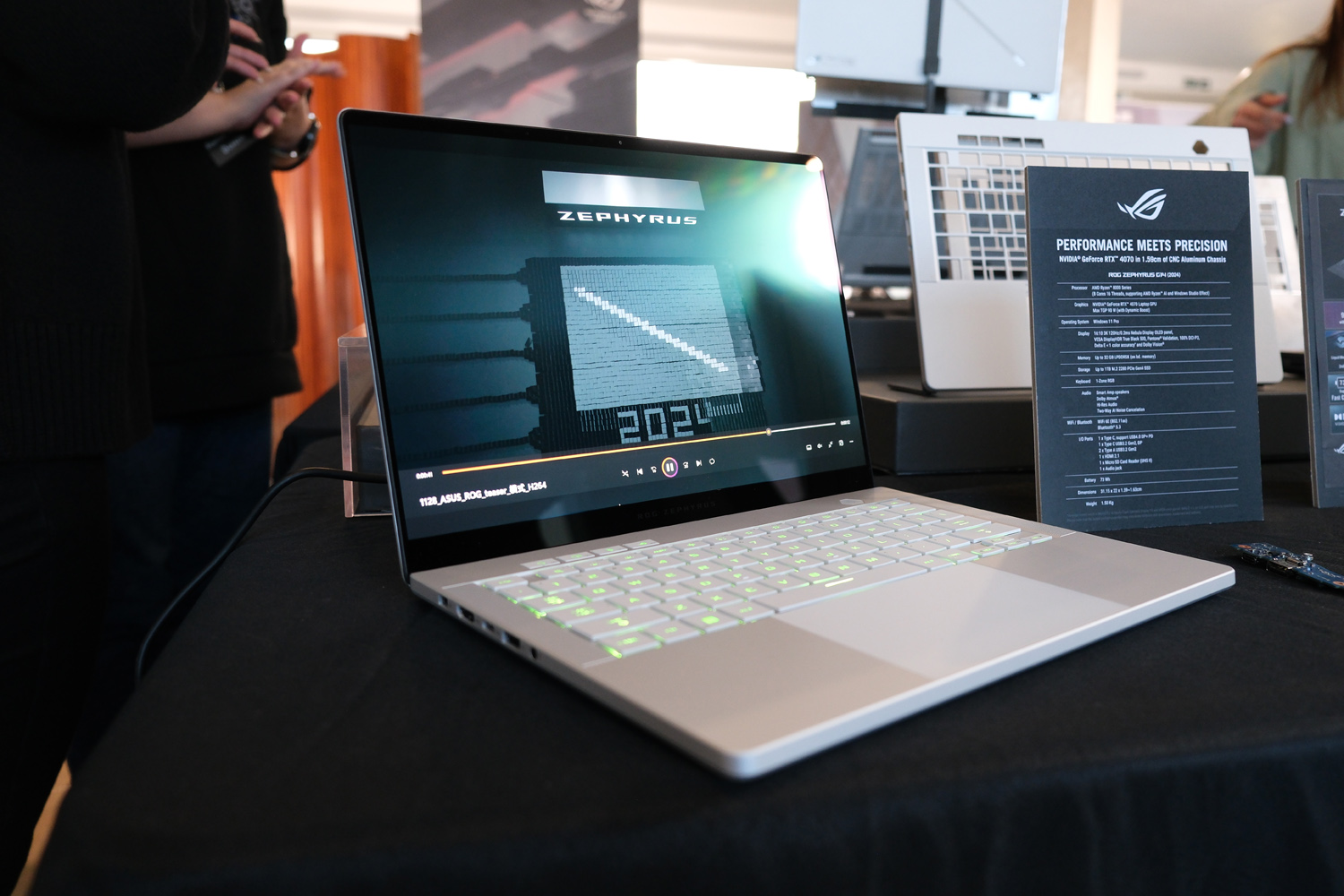

Asus has been churning out fantastic OLED displays on its consumer laptops for years, but the ROG gaming line never got in on the action. The panels just weren’t compatible with Nvidia’s Optimus graphics switching, and couldn’t run at the high refresh rates gamers demanded. Until now, that is.
The Zephyrus G14’s 3K resolution screen is an absolute stunner, with a 1,000,000:1 contrast ratio putting even the best micro-LED panels to shame in terms of deep blacks and bright highlights. Asus says it covers 100% of the DCI-P3 colour space, so should be ideal for professional graphics work in between gaming sessions. Viewing angles are just peachy, screen bezels are stick-thin, and it seemed perfectly bright enough for daytime use during my demo session.
A 240Hz refresh rate sounds blazing quick to me, but for technical reasons the ROG team actually run the panel at an absurd 960Hz, with each frame being shown four times. With pixel response times at a rapid 0.2ms and G-sync support for adaptive refresh, you’d better believe all the onscreen action I saw was blissfully smooth. I’ve yet to see it side-by-side with 2023’s best gaming laptops, but I have a feeling this could be the screen to beat this year.
I didn’t get the chance to properly blast the G14’s speakers, which Asus says are louder and more powerful than before. Gamers are going to want to stick to headphones for distraction-free play and better positional audio anyway. Still, they did a decent enough job streaming a film trailer from YouTube.
Keyboard & touchpad: bigger is better
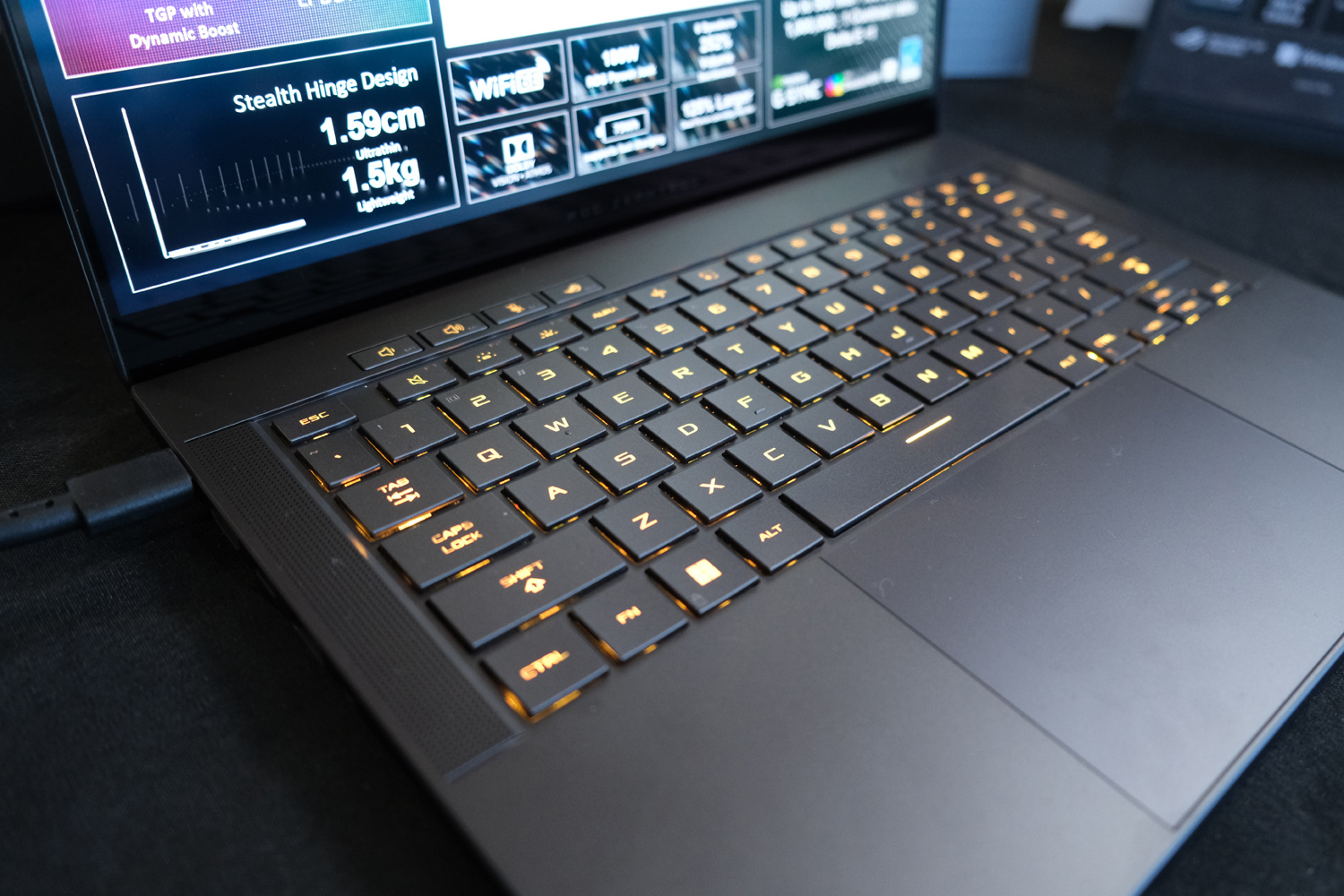
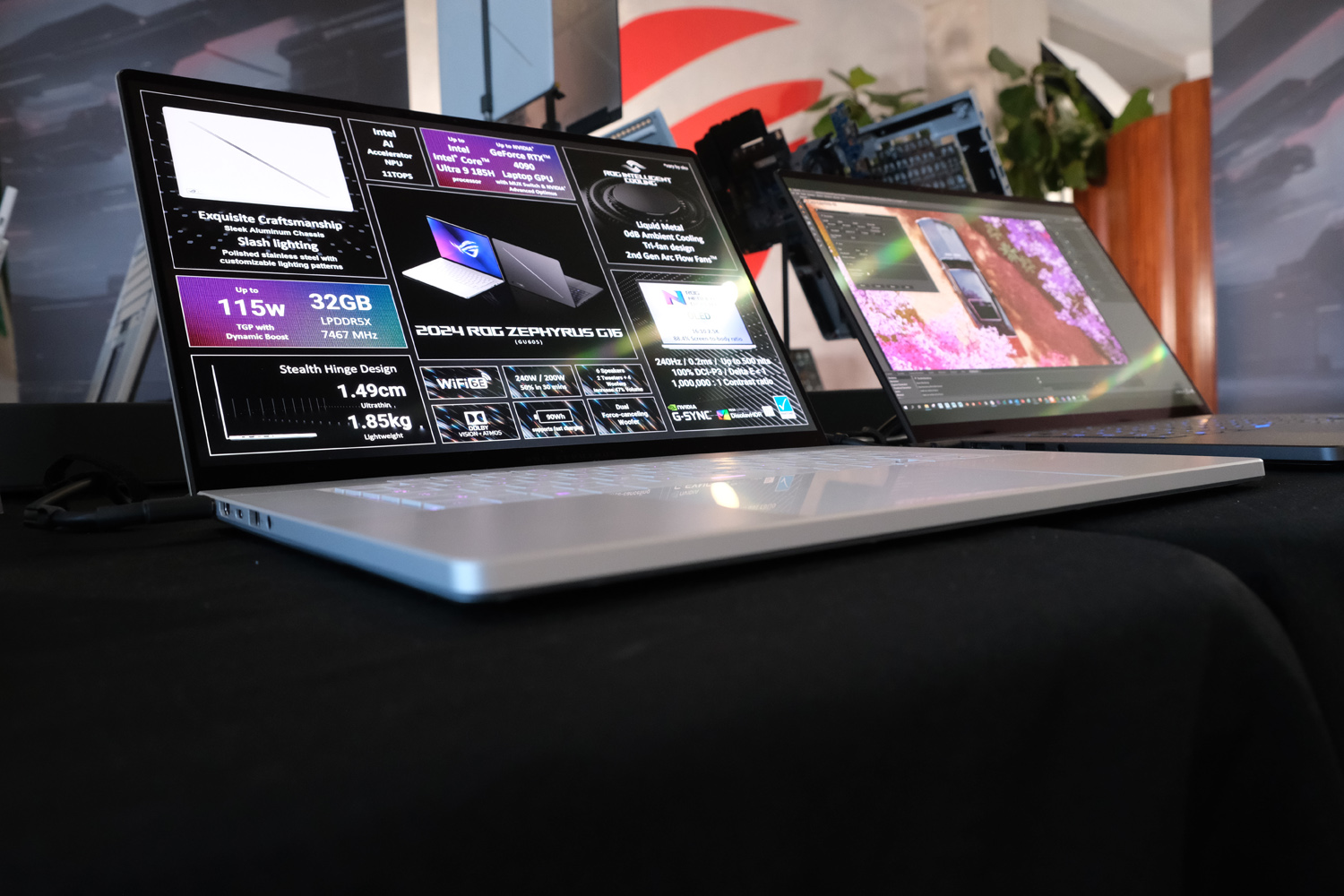
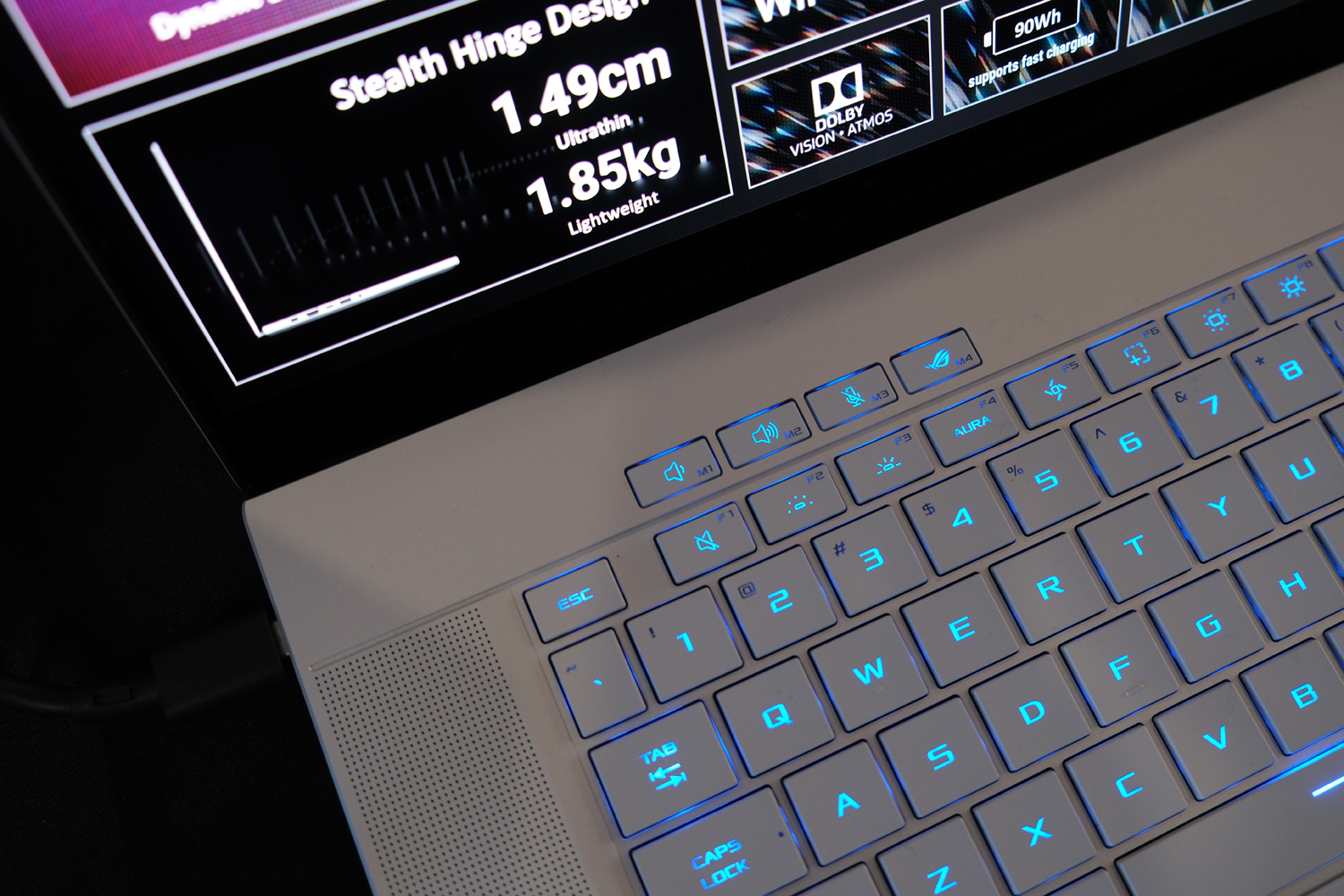
I’m not surprised Asus avoided squeezing a numerical keypad into the ROG 14; this laptop is aimed at gamers rather than office workers, after all. Much better to save the space and flank the QWERTY ‘board with a pair of speaker grilles instead. The key caps themselves have grown by 12% compared to last year, which should make typing more comfortable – or just make it easier to find the WASD keys mid-multiplayer match.
It’s impressive Asus has managed to match the amount of key travel to last year’s effort, given how thin the chassis is now. Each one had a satisfyingly crisp feel, and I typed out a few sentences without any typos. A few convenient shortcut keys sit above the function keys, most usefully the quick jump into the various performance modes.
Of course the whole thing is backlit with colour-changing LEDs you can customise to suit your mood. It looked wonderfully bright in the demo area, with each key cap fully illuminated and the minimum of light bleed around the key edges.
The touchpad has grown by a considerable 27% compared to the old model, and uses a 16:10 aspect ratio to match the display. It felt smooth enough during my taster session for friction-free cursor movement, and recognised all the typical Windows multi-touch gestures. One of the function keys lets you disable it when you’re gaming with a mouse, too.
Performance & battery life: pocketable power
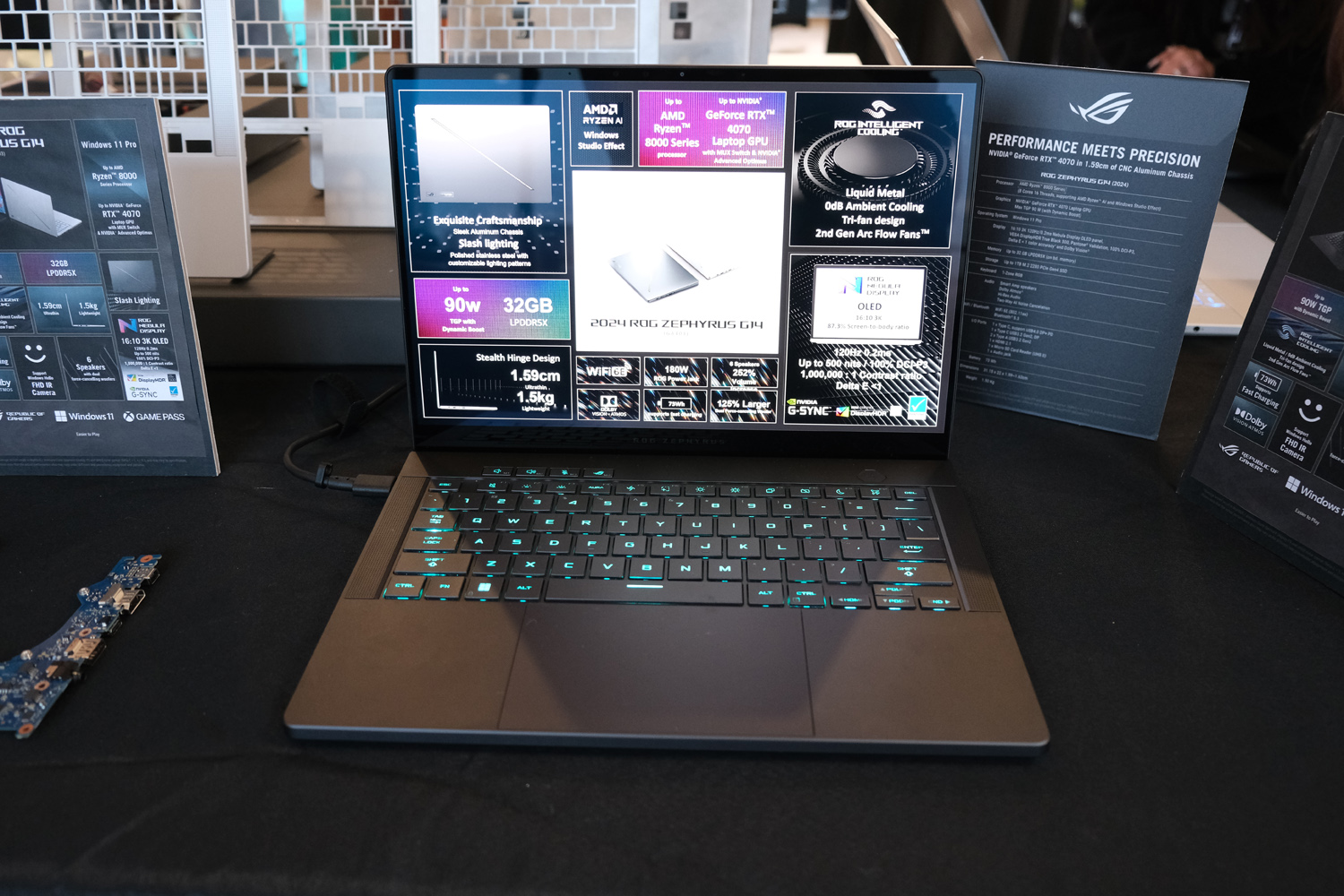
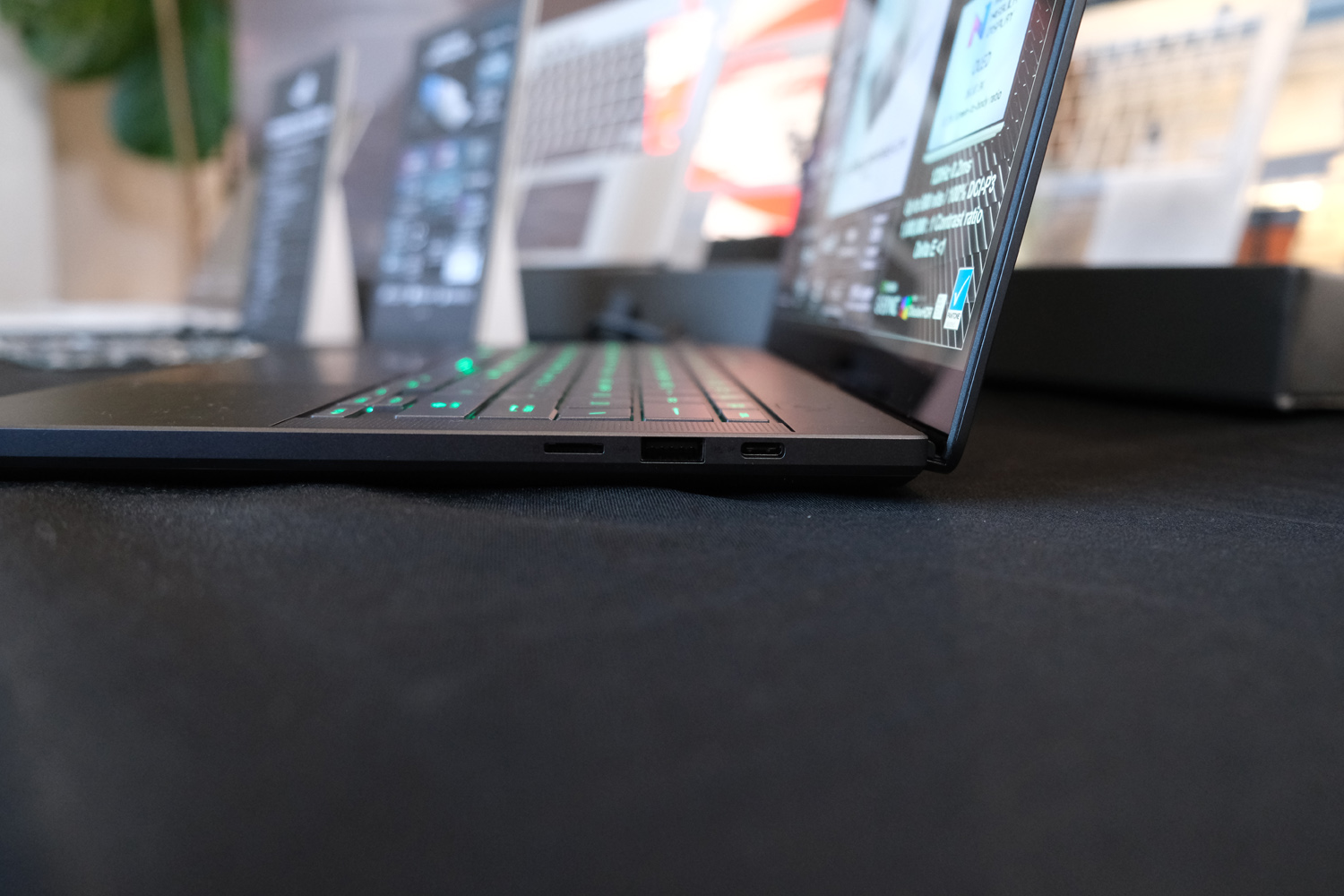
This year’s Asus ROG Zephyrus G14 remains AMD-powered, only now there’s a Ryzen 8000-series CPU at its heart. That means 8 cores and 16 threads, with a 5-10% performance hike over the previous generation while also being more power efficient. Depending on the spec it’ll come paired with up to 32GB of RAM and as much as 1TB of NVMe storage.
I didn’t get the chance to properly push the processor’s performance during my demo, as AMD had yet to officially announce it and benchmarks were off limits. Based on the old model, though, I’m expecting it to demolish daily duties and cope well with more demanding desktop tasks too.
Battery life remains a mystery for now; last year’s G14 could do nine hours per charge on the Windows desktop, so I’d be hoping for similar here.
It’s the GPU that matters most in a laptop like this, anyway. Asus will squeeze an Nvidia GeForce RTX 4050, 4060 or 4070 into the G14, which is no mean feat given its diminutive dimensions. Each should manage perfectly playable frame rates in new titles, even if the lesser cards will have to rely on Nvidia’s DLSS upscaling sooner than the 4070 might. Whichever you go for, a three-fan cooling system and liquid metal thermal paste is needed to tame it.
Power capped at a 65W TDP (plus a 20W boost), which won’t be as high as some larger gaming laptops are able to push the silicon. Frustratingly I don’t have any benchmark results to judge performance, and no games were installed in the demo area, so will have to wait for a full review in order to see how the G14 copes under load.
Perhaps you want even more power? The larger Zephyrus G16 can squeeze in an RTX 4080 or RTX 4090 if you’re so inclined – and have a suitably epic bank balance. The power envelope is pushed to 115W (with boost), which won’t trouble thicker, heavier gaming laptops – but that’s the trade-off for such an easily transportable laptop.
What you won’t find in here is a new generation of Nvidia or AMD GPU. This year’s CES didn’t see any new silicon launched, which is partly why Asus is continuing to sell the 2023 version of the G14. I’m waiting to see if prices will drop accordingly once the 2024 model goes on sale.
Asus ROG Zephyrus G14 (2024) initial verdict
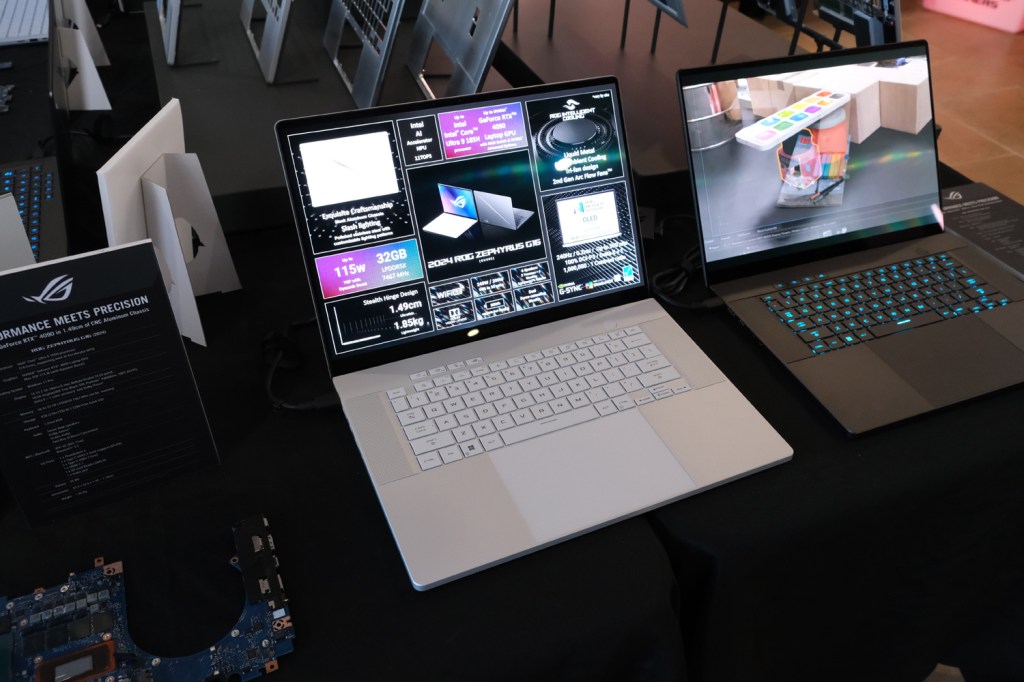
Asus isn’t first with an all-metal gaming ultraportable – Razer did that a few years back – but the Asus ROG Zephyrus G14 is the first I could see myself ditching my current computer for. It looks the business, is wonderfully compact, and has one of the best screens I’ve seen on a gaming laptop.
It won’t be cheap. But considering an M3 Pro-powered MacBook Pro 14in starts at over $2000/£2000, I think it actually looks surprisingly good value. You’re getting a thin and light laptop you can take just about anywhere, with enough gaming grunt to play just about any new release, and a battery that should last all day for when it’s time to get work done. The OLED is really the icing on the cake.
We’re only just at the start of 2024, but I think other compact gaming laptops are going to have to work hard to best this.
Asus ROG Zephyrus G14 (2024) technical specifications
| Screen | 14in, 3k resolution OLED w/ 240Hz |
| CPU | Up to AMD Ryzen 8000-series |
| Memory | Up to 32GB RAM |
| Graphics | Up to Nvidia GeForce RTX 4070 |
| Storage | Up to 1TB NVMe SSD |
| Operating system | Windows 11 |
| Battery | 73Wh |
| Dimensions | 311x220x14.9mm, 1.5kg |
